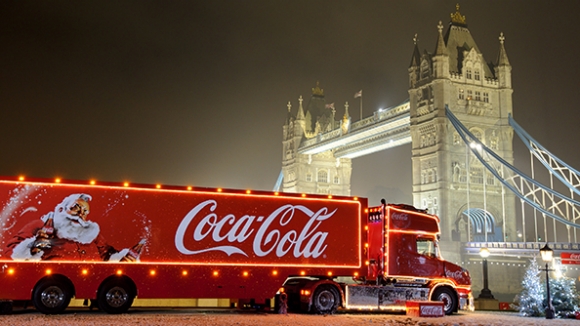
While travelling for a training seminar to Macheke, Mashonaland East province last week, one of the team members in the vehicle noticed what he termed “very awkward” development.
brand savvy with Stha Magida & Tabani Moyo
The driver of a fully branded beverage vehicle was consuming the fizzy drink from Coca-cola, the company’s competitor. This triggered alarm bells, which forms the scope of this week’s article. The discussion is aimed at confronting the perennial and somewhat colossal challenge facing the bulk of the companies in their quest to deliver a consistent brand experience to customers.
In the majority of instances, companies spend the bulk of their marketing effort targeting the external stakeholders such as the customers and how best to shred competition in the battle for brand space in the customer’s mind. The case of the driver we spotted enjoying the products of the competitor in a fully branded company vehicle is a case in point calling for the calibration of the marketing approach towards focusing on both the internal and external stakeholders.
One can be forgiven as this development is also true among most of the decaying brands of note — most of which are state-owned companies in Zimbabwe. It is almost given that the chief executive officer and his team at Zimbabwe Broadcasting Corporation (ZBC) spend most of their prime time watching content of their competitor, Dstv. The same is true for Zesa holdings management being proud owners of generators due to the failure to keep the general household powered, including their own backyard. If taken a notch up at national level, you will realise that the country’s CEO and his top management in the form of ministers have made headlines gaining access to competing countries’ medical facilities, sending their children to foreign universities and trusting foreign brands when buying vehicles for the cabinet and members of parliament.
This is the problem that marketing for many years has downplayed. It has assumed an external posture, while the brand drivers, the employees are left out in the brand success equation. I have never encountered a situation whereby the management of Dstv can at any given time be seen watching ZBC channels or an Econet employee using a Telecel or NetOne network line. This communicates a vote of no confidence message to the customers as the brand touch points in the form of employees will be telling a different narrative to that promised by their brand. It would almost be impossible for a consumer to be convinced of an experience in a brand when the “owner” of the brand such as the employees is opting for rivalry brands.
In doing so, there is therefore need to build an internal branding mechanism that enables the employees, top management and the directors of the company to be brand ambassadors that facilitate the unlocking of customer experience in line with the communicated brand promise. It should, therefore, be noted that brand experience is a responsibility of every person in the organisation as they are the brand experience enablers.
This is even more pressing and demanding in the 21st century given the brand clutter in the different brand categories. Customers are faced with confusion in choosing brands in any category and rely on previous experiences they have had with the different brand touch points such as the employees and communication channels. The employees as brand ambassadors have a critical say on whether a consumer is going to repeat a purchase or not. The process of helping us understand the importance of employees in the branding process is best understood using the Brand Alignment Framework. The model locates a complex relationship among the internal teams (employees); the marketing effort (brand visionaries) and the customers (brand believers). The marketing effort should focus on employees through educational initiatives and aligning the internal stakeholders with the brand promise. The marketing effort will also express the brand promise externally and create the brand experience. The employees on the other hand will be geared towards co-creating the brand experience and delivering on the brand promise to the customers.
- Chamisa under fire over US$120K donation
- Mavhunga puts DeMbare into Chibuku quarterfinals
- Pension funds bet on Cabora Bassa oilfields
- Councils defy govt fire tender directive
Keep Reading
It is, therefore, critical for the marketing teams to create the enabling branding materials for both the external and internal stakeholders to fulfil the positioned brand promise. If the employees as brand drivers and ambassadors do not have the correct mix of support branding material, they will improvise and in the process compromise on the brand promise and experience.
Internal employee buy-in to the brand is highly critical and more important that a logo, colour, and can be one of the most valuable assets for competitive advantage that is hard for competitors to replicate. In 2015, I visited the Google offices in South Africa. All the brand touch points I encountered from entry to exit — reinforced the brand promise of Google through an affectionate and competent pool of employees that delivers on the brand promise of: organising information for a better world. That experience I had at the Google offices has become the viral message that I affirm to the world basing on the experience that I got when I interacted with the employees at their offices.
As a way of concluding, one will be quick to emphasise the fact that companies should build their brands “from inside to outside” ensuring the employees are the catalysts towards the fulfillment of the brand experience which should by its nature exceed the brand promise. As members of the Chartered Institute of Marketing, each time there is challenge pertaining to the services, we are assured of getting a detailed email and a follow up phone call by an employee explaining the challenge and how this will not be repeated. It is our hope that our local brands will evolve to these international standards in the not-so-distant future.
Till next week, keep reading and remain Brand Savvy
Stha Magida is contactable at [email protected]. Her co-writer in this article is contactable at [email protected]











